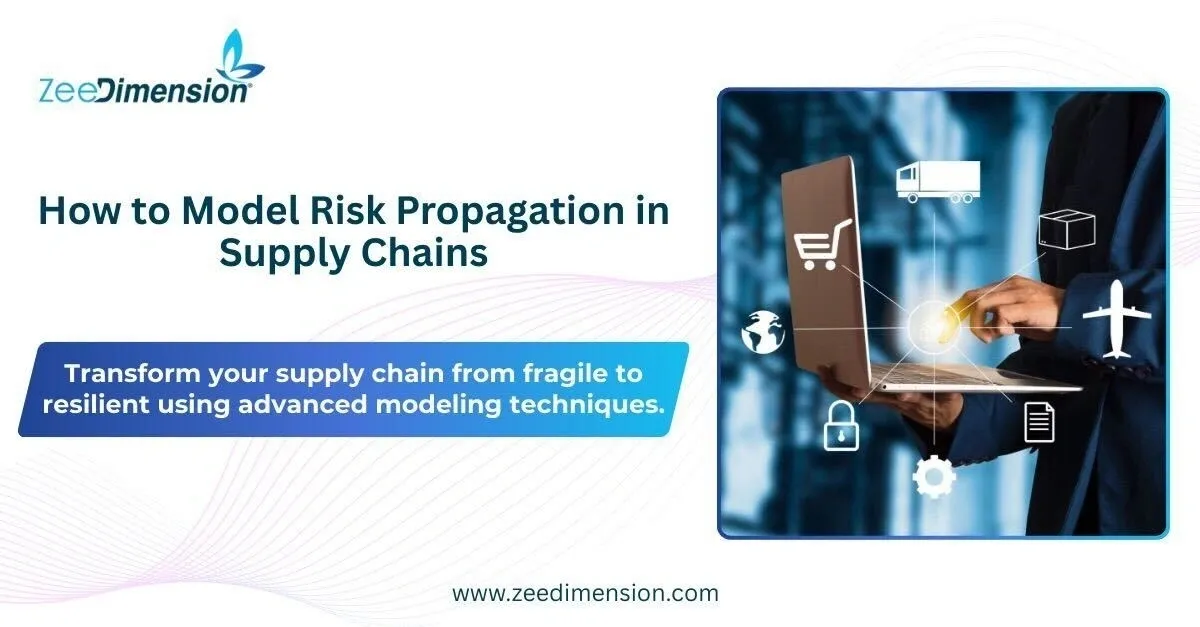
Transform your supply chain from fragile to resilient using advanced modeling techniques.
The Challenge
Supply Chains Are Interconnected—and Vulnerable
A disruption at one node can cascade across the entire network.
But how do we model and prepare for that?
What is Risk Propagation?
Risk Propagation = Chain Reaction
A failure in one supplier, system, or region causes multiple downstream effects:
-
Production halts
-
Delivery delays
-
Rising costs It’s complex. But it’s predictable—with the right models.
Why It Matters
Risk Can Spread Like Fire.
Understanding how it spreads helps:
-
Predict failures
-
Strengthen weak links
-
Build operational resilience
Modeling Techniques
4 Powerful Ways to Model Risk Propagation:
-
Network Analysis
-
Agent-Based Modeling
-
System Dynamics
-
Bayesian Networks
Network Analysis
Map Your Supply Chain Like a Graph
-
Nodes = suppliers/logistics hubs
-
Edges = material/information flow Metrics like betweenness and centrality help pinpoint critical failure points.
Agent-Based Modeling
Simulate Autonomous Behavior
Each supplier or agent responds to disruptions based on rules.
Helps capture emergent behavior and real-world complexity.
System Dynamics
Model the Flow Over Time
-
Simulates inventory, demand, and response loops
-
Ideal for bullwhip effect or stress testing policies
Bayesian Networks
Quantify Probabilities and Dependencies
“If supplier A fails, there’s a 70% chance that…”
Great for predictive risk scoring and scenario forecasting.
Where’s the Data?
Pull From Key Sources:
-
ERP & logistics systems
-
IoT & GPS data
-
Risk ratings & audits
-
Geopolitical & climate feeds
Real-World Scenarios
How Risk Cascades:
-
Tier-2 Earthquake → Global Shortage
-
Cyberattack on Logistics → Port Delays
-
Trade Sanctions → Supply Chain Freeze
Resilience Strategies
How to Fight Back:
-
Stress Testing & Simulations
-
Digital Twins of the Supply Chain
-
Supplier Diversification
-
AI-Powered Risk Forecasting
Top Tools to Explore
-
AnyLogic – Multi-method simulation
-
NetworkX / Gephi – Network visualization
-
FlexSim – Discrete event modeling
-
Everstream / Resilinc – Real-time risk intelligence
Final Thought
Model. Simulate. Adapt.
Supply chain risk is inevitable—but catastrophic failure is not.
With the right models, you can stay resilient, responsive, and ready.







